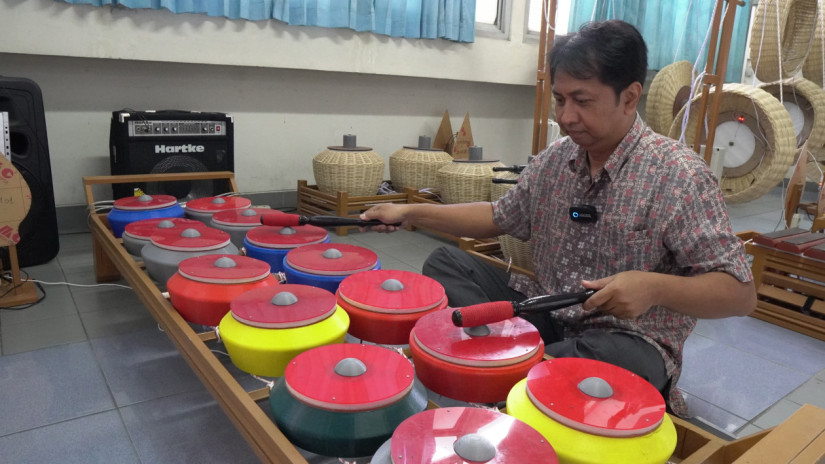
Nang… ning… neng… gung…
That is the sound you hear inside the Department of Electrical Engineering and Information Engineering building, Faculty of Engineering, Universitas Gadjah Mada. The sound of traditional gamelan is not from a live gamelan but from a set of electronic gamelan.
Gameltron is the name given to a set of electronic gamelans created by a research team from the Department of Electrical Engineering and Information Engineering led by Addin Suwastono.
The Gameltron that is often heard today is the second-generation Gameltron, which was created by Professor Adhi Susanto of the Faculty of Engineering around the 1970s.
Now, nearly two years since the passing of Professor Adhi Susanto in January 2022, his legacy is being prepared in a new form as the continuation of the Gameltron generation with the same name.
Addin Suwastono explained that there is a difference between the first-generation Gameltron and the second-generation currently being developed. The main difference lies in the form.
The work of Professor Adhi Susanto resembles a keyboard made of wood. The relatively smaller size can produce the same sound as the previous Gameltron.
“Unfortunately, that Gameltron is now in a condition that cannot be played anymore,” said Suwastono on Friday (November 17).
Suwastono further explained that compared to the first-generation Gameltron, the second-generation Gameltron is made to resemble the original gamelan in form and size.
However, a different material was chosen; the design of the second-generation Gameltron is temporarily made with rattan.
“Even so, it is not impossible to make it with other materials, of course, with production costs that are still low,” said Suwastono.
According to him, the decision to develop the second-generation Gameltron is due to his and the team’s concern about research on electronic gamelan.
From the team’s research on electronic gamelan innovations, many innovations have been found, but unfortunately, many of them change the shape of the original gamelan.
“For example, it becomes similar to a tablet or another form. The way to play it is also different, so it’s pressed,” he explained.
The characteristic of the second-generation Gameltron is played by being struck and in a sitting position like playing the original gamelan. The research team still wants to maintain the experience of playing gamelan and does not intend to disrupt it.
There are three parts in the Gameltron 2.0. First, the controller, or trigger, refers to the physical gamelan that will be played by the player using gamelan beaters.
Second, the sound module is a device that functions to record, generate, and manipulate sound to be managed in various forms. Third, the speaker amplifier enhances and strengthens the sound signal from the sound module to produce a clear sound.
The physical form of the second-generation Gameltron can now be found in the Department of Electrical Engineering and Information Engineering.
According to the plan, the second-generation Gameltron will be launched as part of the 12th Anniversary of DTETI FT UGM on Saturday (18/11) during the Grand Reunion.
In addition to Addin Suwastono, other lecturers involved in developing the second-generation Gameltron include Dr. Silmi Fauziati, Professor Risanuri Hidayat, Dr. Eka Firmansyah, and Enas Dhuhri Kusuma.
The research and development of the second-generation Gameltron also involved 19 students.
“Don’t forget the external parties who also contributed to the collaboration, Dr. Agustinus Winarno from the Industrial Product Design and Development at the UGM Vocational College, and Mrs. Suherjan, the owner of the gamelan ageng Kiyai Suherjan Gedongkiwo Yogyakarta,” he added.
Authors: Rasya Swarnasta and Agung Nugroho
Photographer: Arwin Pamungkas

